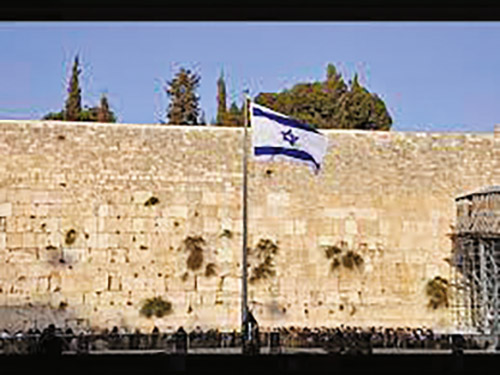
The theme of Jewish unity is often associated with Jerusalem.
Jerusalem is the city of peace although it has been conquered 36 times in its long history. In the words of the Psalmist King David, “The built up Jerusalem is like a city that is bound together.” (Psalms 122:3) The Talmud states on the expression “bound together” that Jerusalem “is a city that binds one Jew to another.” (Jerusalem Talmud, Bava Kama, 7:7). The Psalmist continues, “For there the tribes ascended, the tribes of the God, as a testimony for Israel.” (Psalms 122:3) King David praised the unity of the nation that they go not as separate groups, but as one entity to Jerusalem.
Jewish unity is a necessary component to the completeness of the holy city. It is a theme that is heard from the prophets, Talmudic sources and later commentators.
The first Yom Yerushalayim did not occur until the time of King David. Until then, the upper city of Jerusalem had remained an impregnable, Jebusite fortress since the time of the conquest of Joshua. The book of Chronicles states, “And all of Israel gathered unto David saying, ‘Behold we are your bone and your flesh’.” (Chronicles I, 11:1) Three sentences later: “David and all of Israel went to Jerusalem which is Jebus, the Jebusite. The inhabitants were all there. The inhabitants of Jebus told David, ‘You shall not enter here.’ But David captured the Zion fortress which is the city of David.” (Ibid, 11:4-6) All of Israel gathered and took part in its liberation. The Talmud in Yuma states, “Jerusalem was not divided among the tribes.” (12A) In essence, every Jew has a portion in Jerusalem.
Eventually the Temple Mount itself would be purchased by King David and the first Temple built by his son and successor Solomon.
It is thus more understandable how strife is intolerable to this most holy city. How hatred and infighting between Jews and rival Jewish factions resulted in the fall of Jerusalem in the year 70, as the Talmud states, that the second Temple was destroyed as a result of baseless hatred. (Yuma 9B) As Judea struggled for its independence during Roman rule, infighting pervaded Jerusalem. There were the Sadducees who rejected the authority of the rabbis. They turned the position of the high priesthood into a political post as they vied for power and control. The zealot groups took up arms against Rome as they also opposed each other. The Sicariim brandished knives as they assassinated their political rivals.
One hundred and thirty three years prior to the Temple’s destruction, in 63 BCE, the fighting between the last descendants of the Hasmoneans, Hyrcanus and Aristobulous, over control of Jerusalem led to a Roman invasion and occupation by the general Pompey.
Just as Jerusalem was lost to strife, it was Jewish unity that liberated Old Jerusalem in 1967.
Rabbi Moshe Tzvi Neria, educator, leader and a close student of Rav Kook, in a book he edited, “Moadei HaReiyah,” points out that the Talmud states that “the Passover sacrifice can only be brought when Israel enters (unified) through one gate.” (Zevachim 114 B) He observes that in May 1948, as the Haganah was engaged in a valiant struggle to hold on to the Old City of Jerusalem, units of the armies of the Etzel (Irgun Tzvai Leumi) and the Haganah were planning to break into the Old City to come to the relief of the surviving troops. They were two fighting forces. The Haganah represented the army of the Yishuv while the Etzel represented the Revisionist Zionists. (In the early stages of the war, there were still separate units of fighters from the Haganah, Etzel and Lechi.) According to the plan, the Haganah would enter the Zion Gate and the Etzel, the Damascus Gate. Had they succeeded in taking the Old City, Rav Neriah states, there would have been constant quarrels over who liberated Jerusalem: It would become a city of dispute. It was only in 1967 when one army, the Israel Defense Forces, entered the Old City through one gate, the Lion’s Gate, would the city along with the Temple Mount be liberated.
For the following weeks in 1967, the awestruck Jewish nation not only experienced great relief over surviving a dire threat to its existence, but they now celebrated the long-awaited liberation of the Old City of Jerusalem, the Western Wall and the Temple Mount. All Jewry, as one, shared in that remarkable moment.
Larry Domnitch is the author of “The Impact of World War One on the Jewish People” by Urim Publications. He lives in Efrat.










